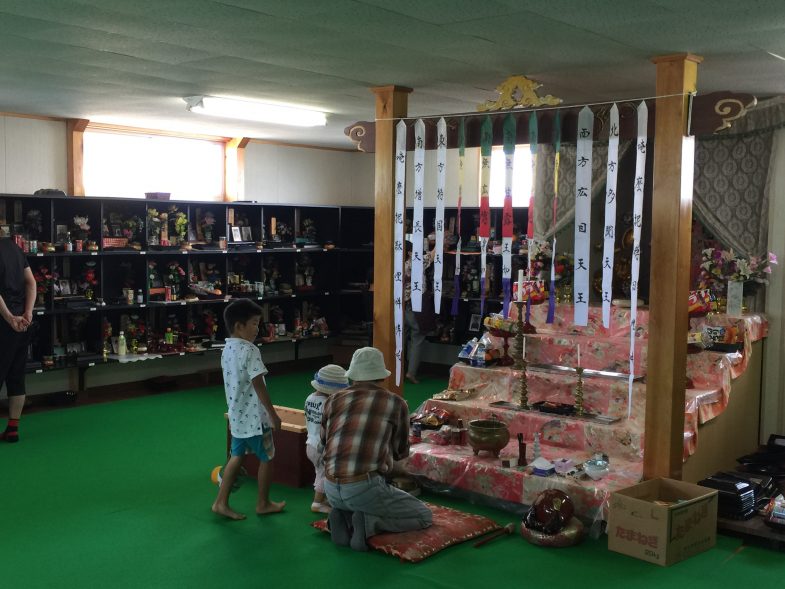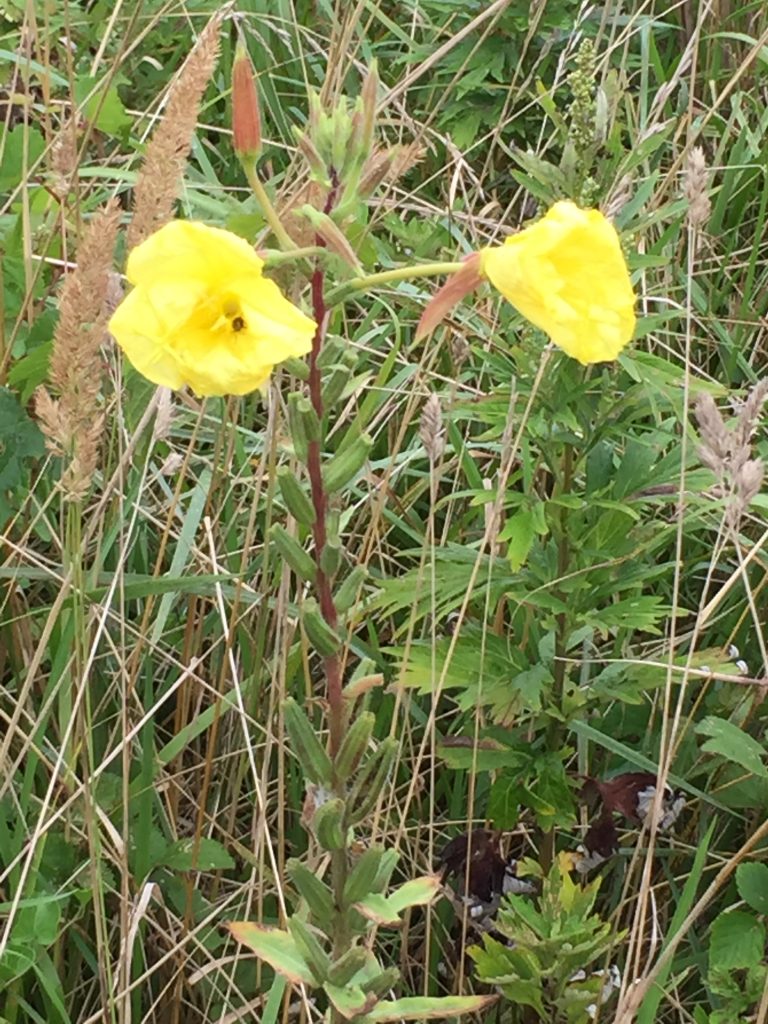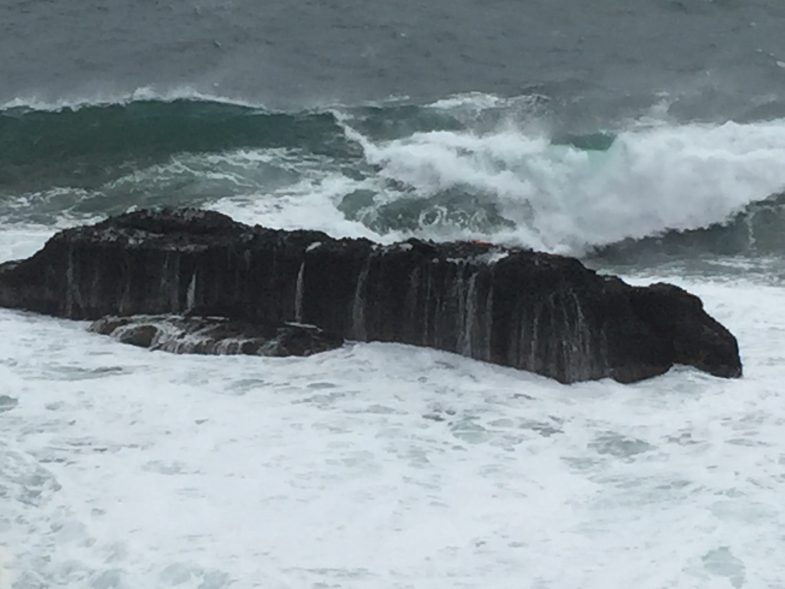
お盆が始まった。この全国一斉の宗教的行事は、それを伝統的に受け入れる人、無視する人、それを利用する人、その期間だけ仕事する人など、全てを巻き込んで行われる一大事業だ。
嘘っぽい「伝統」や、消えてしまった慣習も、このどさくさに現れては消える。写真は大火事で燃えてなくなった寺のかわりに、個人の想い出を求める人たちの休み所どころとして使われている待休所のようす。

When I was a child, we young boys and girls have believed that if someone cut this flower, it would be rain. I have been used to cut it. Most children have some reasons for cutting it sometimes.
When I was a child was called "rain acclamation"。Meaning of acclamation but do not know、It was believed in among children and rain and fold the flowers fall。I also many times in many reason broke this flower。For any children、I sometimes that day to pray for rain there are some days。

The wave I had seen yesterday was from typhoon. I had’nt awared of it. There were very beautiful waves.
Whenever I have seen the waves, I have been fascinated with it.
昨日は少し波があると思っていたら、台風の余波だった。台風のことには気がついていなかった。美しい波だった。
波を見ていると時間を忘れる。同じように見える波だが同じ波は2度とない。そして繰り返すうちに突然巨大な波が現れる。100回に一度の大波、1000回に一度の巨大波と聞くが、そのメカニズムはどうなっているのだろうか。